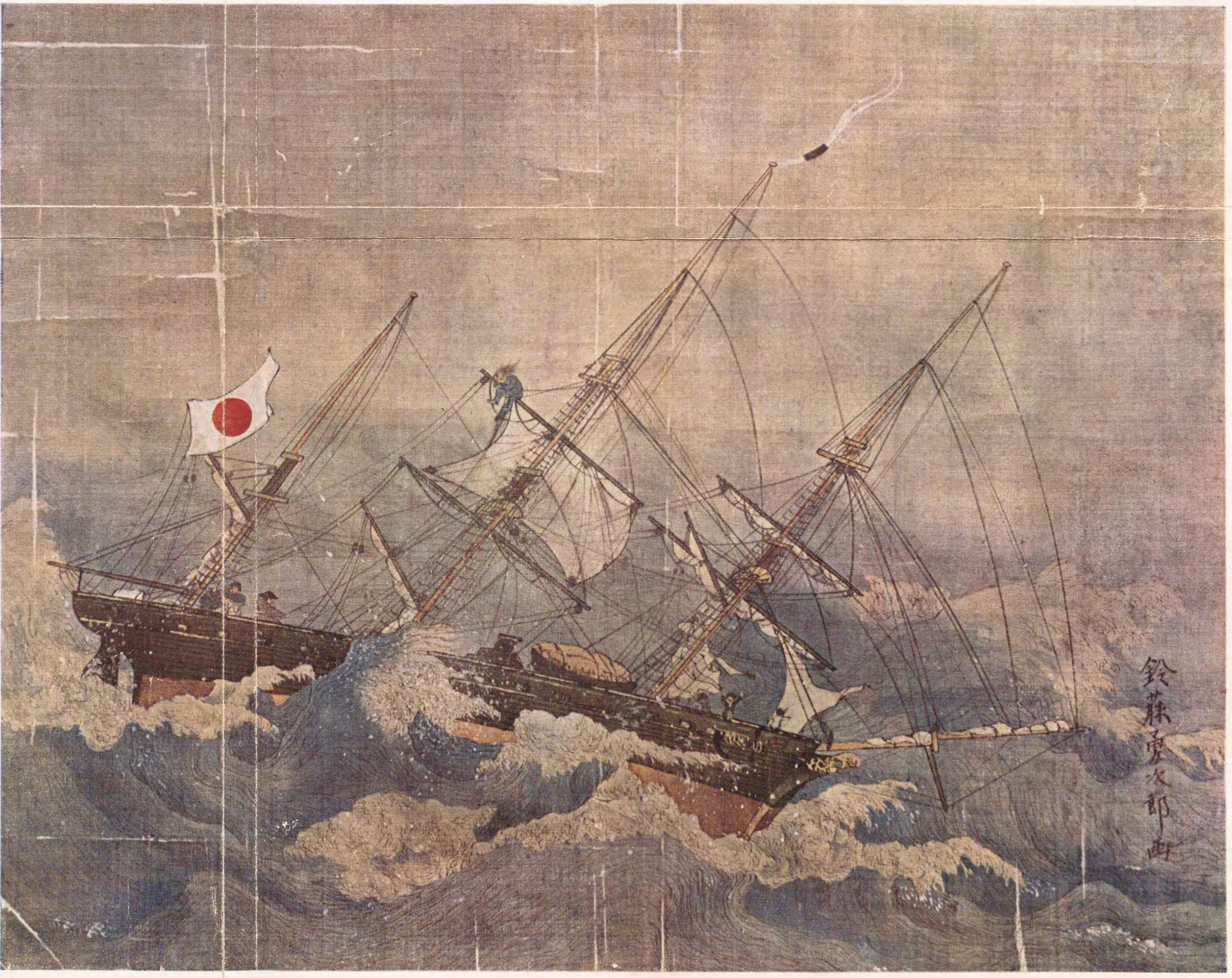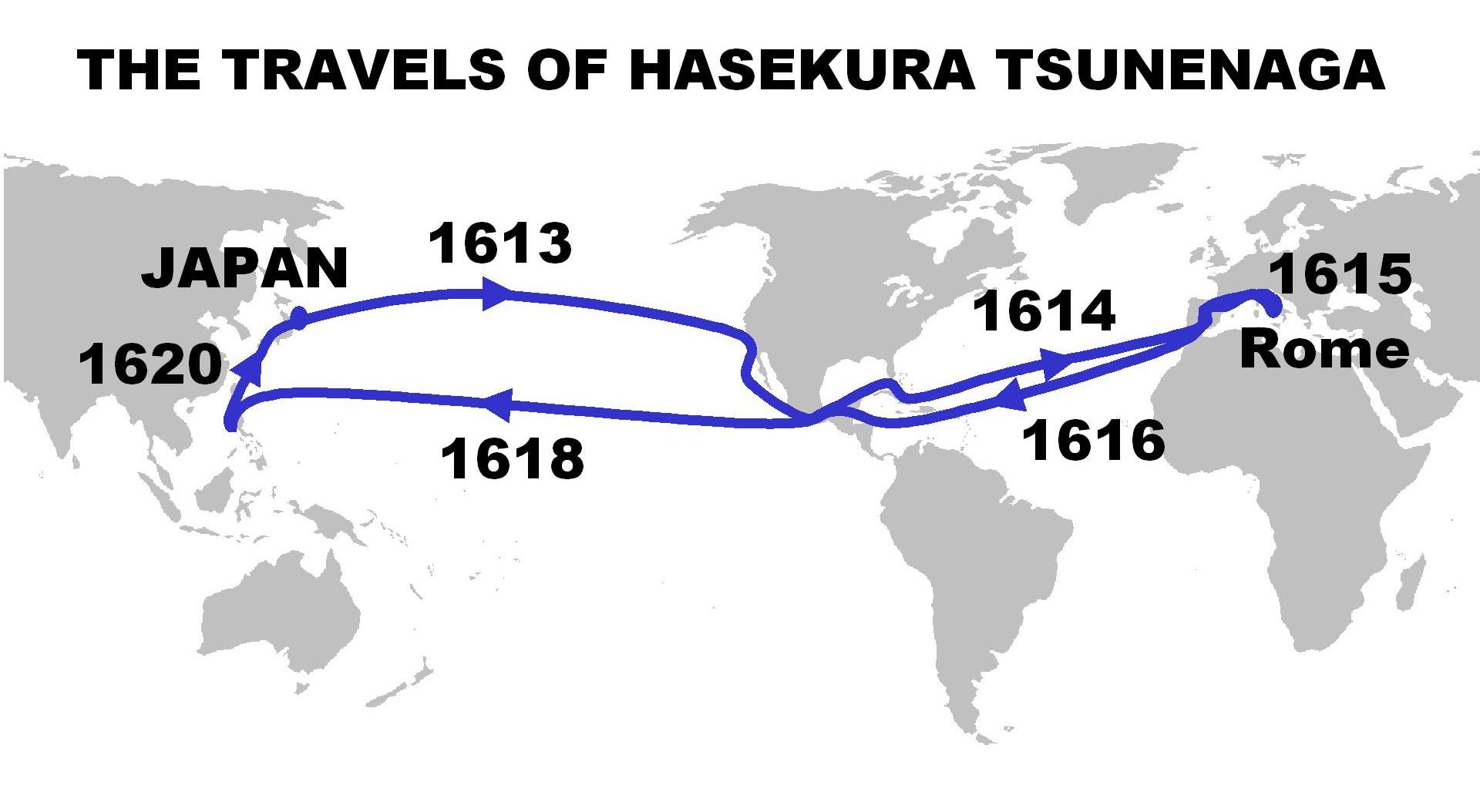|
Japanese Warship Kanrin Maru
''Kanrin Maru'' was Japan's first sail and screw-driven steam corvette (the first steam-driven Japanese warship, ''Kankō Maru'', was a side-wheeler). She was ordered in 1853 from the Netherlands, the only Western country with which Japan had diplomatic relations throughout its period of '' sakoku'' (seclusion), by the ''shōgun''s government, the Bakufu. She was delivered on September 21, 1857 (with the name ''Japan''), by Lt. Willem Huyssen van Kattendijke of the Dutch navy. The ship was used at the newly established Naval School of Nagasaki in order to build up knowledge of Western warship technology. ''Kanrin Maru'', as a screw-driven steam warship, represented a new technological advance in warship design which had been introduced in the West only ten years earlier with . The ship was built by Fop Smit's in Kinderdijk, the Netherlands later known as L. Smit en Zoon. The virtually identical screw-steamship with schooner-rig ''Bali'' of the Dutch navy was also built here ... [...More Info...] [...Related Items...] OR: [Wikipedia] [Google] [Baidu] |
Typhoon
A typhoon is a mature tropical cyclone that develops between 180° and 100°E in the Northern Hemisphere. This region is referred to as the Northwestern Pacific Basin, and is the most active tropical cyclone basin on Earth, accounting for almost one-third of the world's annual tropical cyclones. For organizational purposes, the northern Pacific Ocean is divided into three regions: the eastern (North America to 140°W), central (140°W to 180°), and western (180° to 100°E). The Regional Specialized Meteorological Center (RSMC) for tropical cyclone forecasts is in Japan, with other tropical cyclone warning centers for the northwest Pacific in Hawaii (the Joint Typhoon Warning Center), the Philippines, and Hong Kong. Although the RSMC names each system, the main name list itself is coordinated among 18 countries that have territories threatened by typhoons each year. Within most of the northwestern Pacific, there are no official typhoon seasons as tropical cyclones form thr ... [...More Info...] [...Related Items...] OR: [Wikipedia] [Google] [Baidu] |
Enomoto Takeaki
Viscount was a Japanese samurai and admiral of the Tokugawa navy of Bakumatsu period Japan, who remained faithful to the Tokugawa shogunate and fought against the new Meiji government until the end of the Boshin War. He later served in the Meiji government as one of the founders of the Imperial Japanese Navy. Biography Early life Enomoto was born as a member of a samurai family in the direct service of the Tokugawa clan in the Shitaya district of Edo (modern Taitō, Tokyo). Enomoto started learning Dutch in the 1850s, and after Japan's forced "opening" by Commodore Matthew Perry in 1854, he studied at the Tokugawa shogunate's Naval Training Center in Nagasaki and at the Tsukiji Warship Training Center in Edo. At the age of 26, Enomoto was sent to the Netherlands to study western techniques in naval warfare and to procure western technologies. He stayed in Europe from 1862 to 1867, and became fluent in both the Dutch and English languages. Enomoto returned to Japan on board ... [...More Info...] [...Related Items...] OR: [Wikipedia] [Google] [Baidu] |
Meiji Restoration
The , referred to at the time as the , and also known as the Meiji Renovation, Revolution, Regeneration, Reform, or Renewal, was a political event that restored practical imperial rule to Japan in 1868 under Emperor Meiji. Although there were ruling emperors before the Meiji Restoration, the events restored practical abilities and consolidated the political system under the Emperor of Japan. The goals of the restored government were expressed by the new emperor in the Charter Oath. The Restoration led to enormous changes in Japan's political and social structure and spanned both the late Edo period (often called the Bakumatsu) and the beginning of the Meiji era, during which time Japan rapidly Industrialisation, industrialized and adopted Western culture, Western ideas and production methods. Foreign influence The Japanese knew they were behind the Western powers when US Commodore (United States), Commodore Matthew C. Perry came to Japan in 1853 in Black Ships, large warshi ... [...More Info...] [...Related Items...] OR: [Wikipedia] [Google] [Baidu] |
Boshin War
The , sometimes known as the Japanese Revolution or Japanese Civil War, was a civil war in Japan fought from 1868 to 1869 between forces of the ruling Tokugawa shogunate and a clique seeking to seize political power in the name of the Imperial Court. The war stemmed from dissatisfaction among many nobles and young samurai with the shogunate's handling of foreigners following the opening of Japan during the prior decade. Increasing Western influence in the economy led to a decline similar to that of other Asian countries at the time. An alliance of western samurai, particularly the domains of Chōshū, Satsuma, and Tosa, and court officials secured control of the Imperial Court and influenced the young Emperor Meiji. Tokugawa Yoshinobu, the sitting ''shōgun'', realizing the futility of his situation, abdicated and handed over political power to the emperor. Yoshinobu had hoped that by doing this the House of Tokugawa could be preserved and participate in the future gover ... [...More Info...] [...Related Items...] OR: [Wikipedia] [Google] [Baidu] |
Bankichi Matsuoka
:jp- ''"盤吉と表記されることもあるが正しくは磐吉で、読みはばんきち。"'' was a Japanese naval officer in the Tokugawa Navy during the Boshin War, serving as Captain of the Japanese warship Banryū during the Battle of Hakodate. Biography Bankichi was born in Izu, the third son of Shohei Matsuoka. Shohei was a retainer for Hideryu Egawa of the Nirayama Daikansho. Hideryu was known for his interest in Western studies, especially that of modern maritime defense, studying with Dutch sailors in Nagasaki and swordsmanship from the Shinto Nenryu school. Bankichi would receive an early appreciation for Western artillery and naval warfare through the advances being promulgated in the Izo region by the Nirayama. In 1856, Bankichi was sent to study naval art at the Nagasaki Naval Training Center from Dutch instructors. After graduating, he served as an instructor at the in Tsukiji, participating in the first coastal survey by Japan in 1859. In 1860, Matsuo ... [...More Info...] [...Related Items...] OR: [Wikipedia] [Google] [Baidu] |
Bonin Islands
The Bonin Islands, also known as the , are an archipelago of over 30 subtropical and tropical islands, some directly south of Tokyo, Japan and northwest of Guam. The name "Bonin Islands" comes from the Japanese word ''bunin'' (an archaic reading of ''mujin''), meaning "no people" or "uninhabited". The only inhabited islands of the group are Chichijima (), the seat of the municipal government, and Hahajima (). Archeological evidence has revealed that some of the islands may have been prehistorically inhabited by members of an unknown Micronesian ethnicity. Ogasawara Municipality (''mura'') and Ogasawara Subprefecture take their names from the Ogasawara Group. The is also used as a wider collective term that includes other islands in Ogasawara Municipality, such as the Volcano Islands, along with three other remote islands ( Nishinoshima, Minamitorishima, and Okinotorishima). Geographically speaking, all of these islands are parts of the Nanpō Islands. A total population of ... [...More Info...] [...Related Items...] OR: [Wikipedia] [Google] [Baidu] |
Hasekura Tsunenaga
was a kirishitan Japanese samurai and retainer of Date Masamune, the daimyō of Sendai. He was of Japanese imperial descent with ancestral ties to Emperor Kanmu. Other names include Philip Francis Faxicura, Felipe Francisco Faxicura, and Philippus Franciscus Faxecura Rocuyemon in period European sources. In the years 1613 through 1620, Hasekura headed the Keichō Embassy (), a diplomatic mission to Pope Paul V. He visited New Spain and various other ports-of-call in Europe on the way. On the return trip, Hasekura and his companions re-traced their route across New Spain in 1619, sailing from Acapulco for Manila, and then sailing north to Japan in 1620. He is considered the first Japanese ambassador in the Americas and in Spain, despite other less well-known and less well-documented missions preceding his mission. Although Hasekura's embassy was cordially received in Spain and Rome, it happened at a time when Japan was moving toward the suppression of Christianity. European ... [...More Info...] [...Related Items...] OR: [Wikipedia] [Google] [Baidu] |
San Francisco
San Francisco (; Spanish language, Spanish for "Francis of Assisi, Saint Francis"), officially the City and County of San Francisco, is the commercial, financial, and cultural center of Northern California. The city proper is the List of California cities by population, fourth most populous in California and List of United States cities by population, 17th most populous in the United States, with 815,201 residents as of 2021. It covers a land area of , at the end of the San Francisco Peninsula, making it the second most densely populated large U.S. city after New York City, and the County statistics of the United States, fifth most densely populated U.S. county, behind only four of the five New York City boroughs. Among the 91 U.S. cities proper with over 250,000 residents, San Francisco was ranked first by per capita income (at $160,749) and sixth by aggregate income as of 2021. Colloquial nicknames for San Francisco include ''SF'', ''San Fran'', ''The '', ''Frisco'', and '' ... [...More Info...] [...Related Items...] OR: [Wikipedia] [Google] [Baidu] |
Uraga Channel
The is a waterway connecting Tokyo Bay to the Sagami Gulf. It is an important channel for ships headed from Tokyo, Yokohama, and Chiba to the Pacific Ocean and beyond. Geography The Uraga channel is at the southern end of Tokyo Bay (formerly known as Edo Bay, prior to 1868). Tokyo Bay is surrounded by the Bōsō Peninsula (Chiba Prefecture) to the east and the Miura Peninsula (Kanagawa Prefecture) to the west. In a narrow sense, Tokyo Bay is the area north of the straight line formed by the on the Miura Peninsula on one end and on the Boso Peninsula on the other end. This area covers about 922 km². Tokyo Bay, in a broader sense, would be understood to include the Uraga Channel as well (its southwestern demarcation being the straight line between the Tsurugisaki Lighthouse and Sunosaki Lighthouse); and the total area of the bay would then be 1320 km². The city of Uraga is located at the northern end of the channel on the Miura Peninsula. Due to its strategic l ... [...More Info...] [...Related Items...] OR: [Wikipedia] [Google] [Baidu] |
John M
John is a common English name and surname: * John (given name) * John (surname) John may also refer to: New Testament Works * Gospel of John, a title often shortened to John * First Epistle of John, often shortened to 1 John * Second Epistle of John, often shortened to 2 John * Third Epistle of John, often shortened to 3 John People * John the Baptist (died c. AD 30), regarded as a prophet and the forerunner of Jesus Christ * John the Apostle (lived c. AD 30), one of the twelve apostles of Jesus * John the Evangelist, assigned author of the Fourth Gospel, once identified with the Apostle * John of Patmos, also known as John the Divine or John the Revelator, the author of the Book of Revelation, once identified with the Apostle * John the Presbyter, a figure either identified with or distinguished from the Apostle, the Evangelist and John of Patmos Other people with the given name Religious figures * John, father of Andrew the Apostle and Saint Peter * Pope Joh ... [...More Info...] [...Related Items...] OR: [Wikipedia] [Google] [Baidu] |





